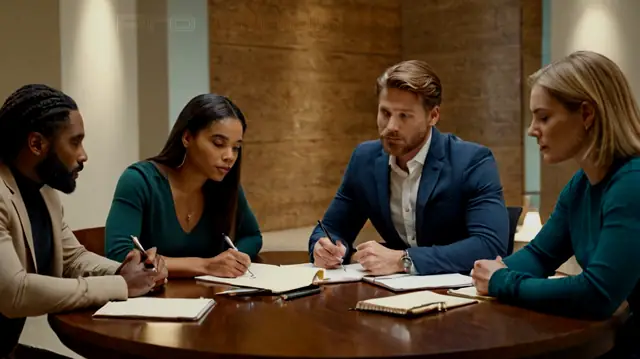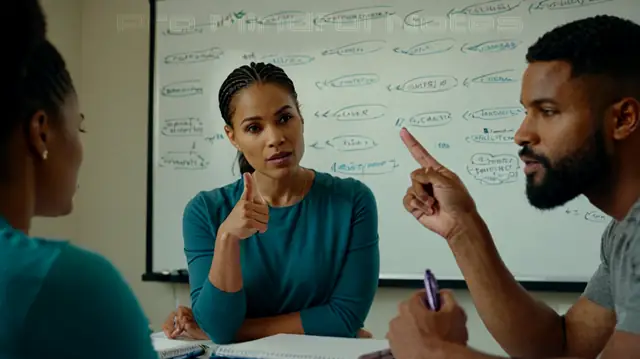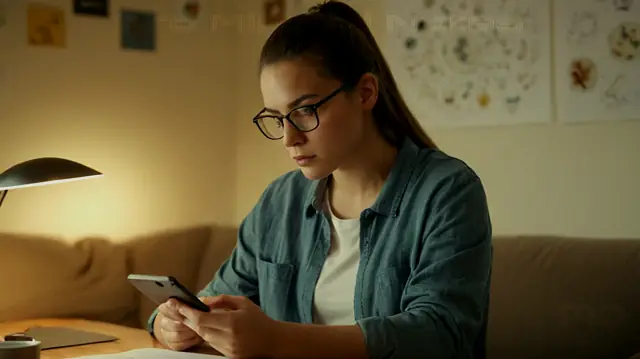Master the art of taking effective group therapy notes

Writing effective group therapy notes is an essential skill for any therapist, counselor, or mental health professional working with groups. In this article, we will explore the importance of keeping accurate and informative group therapy progress notes, and provide you with a practical guide on how to do it.
In our day-to-day practice, we often face the challenge of capturing the essence of a group session in just a few lines of writing. It is crucial to strike the right balance between brevity and detail when creating a sample group therapy progress note that effectively summarizes the session's key points. This can be achieved by using a well-structured template, such as our group notes template, which includes spaces for noting down individual participants' contributions, insights gained during the session, and strategies discussed or implemented.
Whether you are working with cognitive-behavioral groups, psychoeducational groups, or simply providing support groups to clients, maintaining detailed yet concise group therapy progress notes is crucial for facilitating communication among therapists, clients, and other healthcare professionals. In this article, we will delve into the world of effective group note-taking by exploring a step-by-step approach to creating comprehensive and informative group therapy progress note examples, as well as providing you with a tried-and-tested group note template that you can use in your own practice.
- Why accurate group therapy notes are essential
- Structuring your notes for clarity and efficiency
- Recording session goals, discussions, and insights
- Noting participant progress and observations
- Including relevant details about each member's contributions
- Using a template to streamline your note-taking process
- Tips for writing effective group therapy notes
- Overcoming common challenges in taking group therapy notes
- Conclusion
- Video about Master the art of taking effective group therapy notes
Why accurate group therapy notes are essential
Accurate and thorough group therapy notes are crucial for effective treatment and communication in group therapy settings. As a therapist, taking detailed group notes enables you to track sample group therapy progress note, assess client progress, and identify areas requiring additional support. Moreover, these notes serve as valuable documentation for client's files, allowing them to monitor their own progress and reflect on the insights gained during sessions.
A well-structured group note template can greatly facilitate this process. By using a standardized format, you can ensure that all relevant information is captured, including the session's purpose and goals, participants' contributions, notable observations, and strategies discussed. This approach not only streamlines your note-taking but also helps you to develop a comprehensive understanding of each client's journey.
When it comes to group therapy progress note examples, having a clear and organized template can make all the difference. By incorporating essential components such as session goals, participant insights, and action items, you'll be able to generate group therapy progress notes that effectively summarize the key takeaways from each session. This will enable you to provide meaningful feedback to clients and their healthcare providers, ensuring a more cohesive and supportive treatment environment.
Structuring your notes for clarity and efficiency
When it comes to taking group notes, having a clear structure can make all the difference in capturing the essence of each session. A well-organized format allows you to efficiently document key points, observations, and insights without sacrificing accuracy or detail.
Consider using a group therapy note template as a starting point, which typically includes sections for: Session summary, Group dynamics, Individual participant updates, and Next steps or goals. This structure helps ensure that your notes are comprehensive and easy to review. For example, you might use the following format:
Session summary:
* Group therapy progress note: Briefly describe the overall atmosphere of the session and any notable discussions or topics that emerged.
Group dynamics:
* Identify any patterns or observations about group interactions, such as dominant personalities or areas of consensus.
To further streamline your note-taking process, consider creating a customized group notes template specific to your practice. This can save time in the long run by allowing you to quickly focus on key aspects without having to recreate the wheel each session.
For instance, if you're leading a cognitive-behavioral group therapy program, you might include sections for identifying sample group therapy progress note targets or homework assignments. By structuring your notes with these templates in mind, you can provide clear and concise documentation that accurately captures the journey of your clients throughout treatment.
Recording session goals, discussions, and insights

When recording session goals, it's essential to capture the main objectives that participants aim to achieve in the group therapy process. For instance, a sample group therapy progress note might include: "The group aimed to explore strategies for coping with anxiety" or "Participants sought to develop effective communication skills." By highlighting these goals, you can ensure that everyone involved in the treatment is on the same page and working towards achieving the desired outcomes.
In addition to capturing session goals, it's crucial to document discussions and insights that arise during group therapy. This may involve summarizing key points made by participants, notable observations or breakthroughs, and any challenges or concerns raised during the session. A well-organized group notes template can help you stay focused and ensure that your note-taking process is efficient and comprehensive.
To further enhance the accuracy and clarity of your group therapy progress notes, consider using a group therapy note template as a guide. This can include sections for recording session goals, discussions, and insights, as well as space for documenting any relevant feedback or recommendations provided to participants. By incorporating these elements into your note-taking process, you'll be able to create detailed and informative group therapy progress notes that provide valuable insights into the treatment process.
Noting participant progress and observations

When it comes to taking effective group therapy notes, capturing the progress of each individual participant is crucial. This can be done by noting specific instances where participants demonstrate growth or insight during the session. For example, a sample group therapy progress note might include: "Sarah shared her struggles with anxiety and was able to identify some triggers, which she hadn't previously recognized. She expressed a sense of relief that others were experiencing similar challenges." By incorporating these types of observations into your notes, you'll be able to track individual participants' progress over time and adjust the group therapy approach as needed.
In addition to noting specific instances of progress, it's also important to document any notable observations or insights that emerge during the session. This might include quotes from participants, reactions to certain topics or exercises, or even simply a sense of the overall mood or energy in the room. A well-structured group therapy notes template, for instance, could include a section for "Notable Observations" where you record these kinds of insights.
When it comes time to review your group therapy progress note and reflect on what's worked well, what hasn't, and what needs adjustment, having a clear and organized system in place can make all the difference. This is where a group note template or group therapy note template can be especially helpful. By using a standardized format for capturing participant progress and observations, you'll be able to quickly identify trends, patterns, and areas of focus that require attention.
Including relevant details about each member's contributions

When it comes to taking effective group therapy notes, one of the most important aspects is documenting the contributions and progress of each individual participant. In a typical group therapy session, you may have multiple individuals sharing their thoughts, insights, and experiences. It's crucial that your notes accurately reflect these contributions, as they can provide valuable insights into each member's progress.
For instance, in a sample group therapy progress note, you might write: "Sarah shared her experience of feeling overwhelmed by work demands, and the group offered supportive feedback, encouraging her to prioritize self-care." In another example, your note might read: "John discussed his struggles with anxiety, and the group therapist helped him identify coping strategies, such as deep breathing exercises." By including these relevant details in your group therapy notes template, you can create a comprehensive picture of each participant's progress and growth.
When crafting your group note, be sure to include the following elements:
- A brief summary of each member's contributions
- Any notable insights or breakthroughs shared by participants
- The therapist's observations and feedback provided during the session
- Goals or homework assignments set for individual participants
By incorporating these essential details into your group therapy progress note example, you can ensure that your notes provide a clear, accurate representation of each member's journey.
Using a template to streamline your note-taking process

When it comes to taking group therapy notes, having a clear and consistent structure can make all the difference. A well-designed group therapy notes template can help you stay organized and ensure that you're capturing all the essential information from each session. By using a standardized format, you'll be able to quickly scan through your notes and identify key insights, themes, and progress.
To get started, consider downloading a sample group therapy progress note or creating your own group note template. This should include sections for:
* Identifying information (e.g., date, group name, participants' names)
* Session purpose and goals
* Notes on each participant's contributions and progress
* Any notable observations, insights, or breakthroughs
* Challenges or concerns raised during the session
Having a group notes template in place will save you time and reduce stress, allowing you to focus on what matters most – providing high-quality care for your clients.
Tips for writing effective group therapy notes
When it comes to documenting group therapy sessions, having a clear and structured approach can make all the difference. One way to ensure that your group notes template is comprehensive and easy to follow is to use a sample group therapy progress note as a guide. This will help you stay focused on capturing the most important details, including each participant's contributions and progress towards their goals.
When writing your group therapy progress note, it's essential to prioritize clarity and concision. Aim for a balanced summary that highlights both the positive developments and any areas where participants may be struggling. Be sure to include specific examples or anecdotes to bring the session to life, and use quotes from participants whenever possible. This will not only provide valuable context but also demonstrate your commitment to understanding each individual's unique experience.
Another key consideration is using a group therapy notes template to organize your thinking and ensure that you're covering all the necessary elements. A well-designed template can help you stay on track, even when the session gets hectic or complex. Look for templates that include sections for summarizing the main topics discussed, any notable insights or breakthroughs, and potential challenges or concerns raised during the session. By using a group note template, you'll be able to provide clear and concise summaries of each group therapy session, making it easier to track progress over time.
To take your note-taking skills to the next level, consider incorporating a few key elements into your group notes template, such as:
* A section for summarizing the main topics discussed during the session
* A space for highlighting any notable insights or breakthroughs made by participants
* A area for documenting potential challenges or concerns raised during the session
* A place to note any areas where participants may be struggling or requiring additional support
By incorporating these elements into your group therapy progress notes, you'll be able to provide clear and concise summaries of each group therapy session, making it easier to track progress over time.
Overcoming common challenges in taking group therapy notes
When it comes to documenting group therapy sessions, therapists often face unique challenges. One of the most significant hurdles is keeping track of multiple client's progress and interactions within a single session. Group therapy progress notes can help alleviate this burden by providing a structured format for recording essential information.
To overcome this challenge, consider using a group therapy note template, which outlines key areas to cover, such as each participant's contributions, insights gained, and any notable observations or breakthroughs. This template ensures that all important details are captured in a concise manner, making it easier to review progress over time. For example, a sample group therapy progress note might include sections for "Session Purpose," "Participant Insights," "Notable Observations," and "Next Steps."
Another challenge therapists face when taking group notes is maintaining objectivity while still conveying the complexity of the group dynamics. To address this concern, use a template that encourages descriptive writing without overwhelming you with too much detail. A well-designed group notes template can help you strike the right balance between concision and depth.
By adopting these strategies, you'll be better equipped to overcome common challenges in taking group therapy notes and provide accurate, comprehensive documentation of each session's progress.
Conclusion
By mastering the art of taking effective group therapy notes, therapists can streamline their documentation process, better communicate with clients and healthcare professionals, and ultimately enhance patient care. With the right techniques and tools in hand, therapists can create detailed and informative sample group therapy progress note that accurately captures the essence of each session.
To get started, consider using a standardized template like a group notes template, which can help ensure that all necessary information is included. By filling out fields such as date, participants, and goals, you'll be able to quickly generate comprehensive group therapy progress note that covers important topics like treatment plans, coping strategies, and notable insights.
Remember, the goal of group therapy notes is to provide a clear and concise picture of each session's progress. By incorporating relevant details, such as participant feedback and observations, you can create a detailed and accurate record that will help guide future sessions and facilitate collaboration with other healthcare professionals.
Video about Master the art of taking effective group therapy notes
Leave a Reply


Related Posts